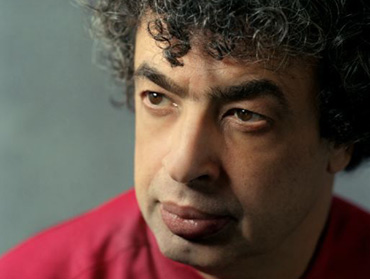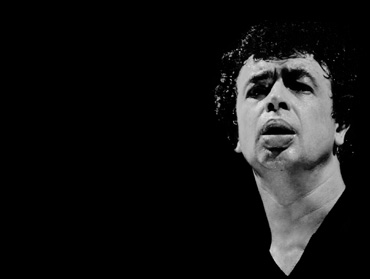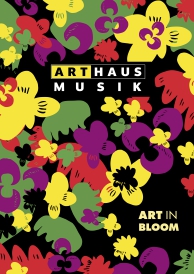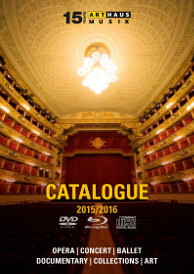
RACHMANINOFF
Sergei Rachmaninoff





Sergei Rachmaninoff
RACHMANINOFF
2007
Soloists:
Tatiana Pavlovskaya (sopran), Evgeny Akimov (tenor), Vladimir Vaneev (bariton)
Orchestra, Chorus:
WDR Sinfonieorchester Köln, WDR Rundfunkchor Köln, Lege Artis Chamber Choir
Conductor:
Semyon Bychkov
“I think, the longer we go on living the more memory we accumulate. Naturally, it’s experience of life. It comes back to haunt you, either beautiful memories or ugly ones. No one can escape them. No matter how much we would like to look forward to what’s coming and how much we are concerned or interested in the projects that are coming up and that is a very positive way of living, but I don’t think there is one person, who is able to completely escape from remembering certain bits and pieces of the life of the past. And I am pretty convinced that Rachmaninoff was not able or maybe not even interested in doing that.” (Semyon Bychkov) DOCUMENTARIES AND PERFORMANCES OF …. Directed by Enrique Sánchez Lansch THE BELLS op. 35 After Edgar Ellen Poe Rachmaninov completed his choral symphony, The Bells, in 1913, and thereafter liked it best of all his works. Its origins are strange enough. A girl he had never met, who admired the poems of Edgar Allan Poe and the music of Sergei Rachmaninov, sent the composer an anonymous letter, urging him to set to music ''The Bells'', which she included, in a very free Russian version by Konstantin Balmont. Rachmaninov was inspired. He devised a highly original form that suited his inspiration perfectly: a symphony (with the conventional four movements) with three soloists, chorus, and large orchestra. Rachmaninov’s gloomy finale had a distinguished precedent in Tchaikovsky’s Pathétique Symphony. The Bells is a heavily onomatopoeic poem by Edgar Allan Poe which did not see print until after his death in 1849. It is perhaps best known for the diacopic repetition of the word ''bells.'' The poem has four parts to it; each part becomes darker and darker as the poem progresses from “…the jingling and the tinkling” of the bells in part 1 to the “…moaning and the groaning” of the bells in part 4. SYMPHONIC DANCES op. 45 “He did not create anything after “Symphonic Dances”. It turned out to be his last piece. It was three years before he died. He had no idea, when he will die, but he certainly knew that he did not have an infinite period to go on living. He certainly didn’t know whether he would actually be able to create another musical work. The truth is he didn’t.” (Semyon Bychkov) The Symphonic Dances, op. 45, completed in 1940, and premiered on January 3, 1941, was Rachmaninov’s last composition. It was premiered by Eugene Ormandy and the Philadelphia Orchestra, also bearing a dedication to them. Originally scored for two pianos, it is now often heard in the orchestral version which is remarkable for its use of the alto saxophone as a solo instrument. The Dances combine energetic rhythmic sections (reminiscent of Stravinsky's Rite of Spring) with some of the composer's most typical lush lyric melodies. AND AN EXCLUSIVE PERFORMANCE OF … Directed by Hans Hadulla RACHMANINOFF’S SYMPHONY NO. 2 op. 27 At its premiere, his Symphony No. 1 was considered an utter disaster; its criticism was so harsh that it sent the young composer into a bout of depression. Even after the success of his Piano Concerto No. 2, Rachmaninov still lacked confidence in his writing. He was very unhappy with the first draft of his Second Symphony but after months of revision, Rachmaninov finished the work and conducted the premiere in 1908. The triumph regained Rachmaninov’s sense of self-worth as a symphonist. Because of its long length, Symphony No. 2 has been subjected to many revisions, particularly in the 1940s and 1950s, that reduced the piece from nearly an hour to 35 minutes. But as the entire work is so carefully structured, the radical revisions deeply distorted the carefully planned structure of the piece. Today, however, the piece is usually performed in its entirety, with only the omission of a repeat in the first movement.
Label:
Arthaus Musik
Genre:
Dokumentation
Running Time:
255
Picture Format:
16:9
Sound Format:
PCM Stereo / Dolby Digital 5.1
Number of Discs:
2
Region:
0
Languages:
GB
Subtitle Languages:
DE, FR, GB
EAN:
0807280143997
UPC:
807280143997

Benjamin Schindler’s documentary is a fascinating journey to a familiar but unknown country in which the lines between fact and fi ction, past and present and dreams and real states of experience are blurred. A journey into the collective memory of collapsing societies. A journey into the post-truth era. PLAYLAND USA shines a light onto the continuing(...)

On December 14, 2004 Rafael Kubelik would have been 90 years old. The son of the famous violinist Jan Kubelik ant the Hugarian countess Csaky-Szell, Rafael Kubelik became one of the most important conductors of the 20th century. His conducting is described as warm, human, with an emphasis on melody and a warm orchestral sound, with a(...)














 PDF Download (5,5 MB)
PDF Download (5,5 MB) PDF Download (6,7 MB)
PDF Download (6,7 MB)